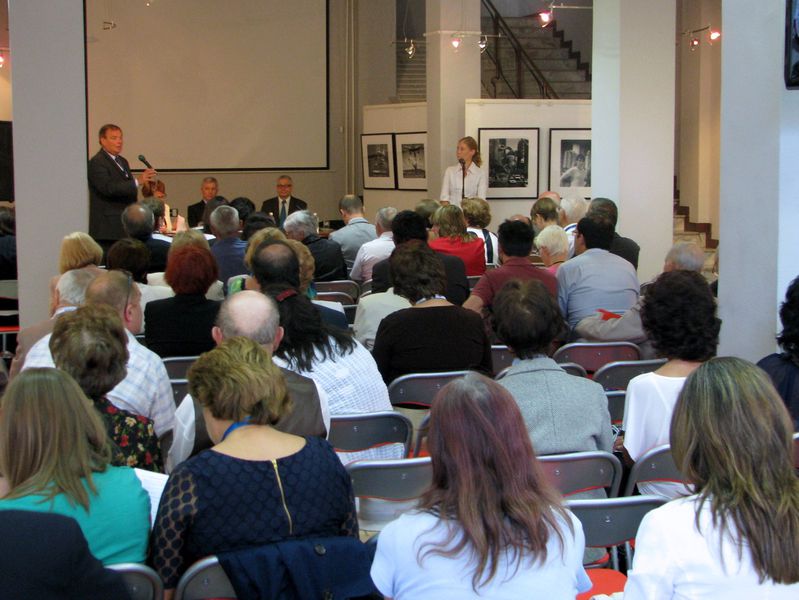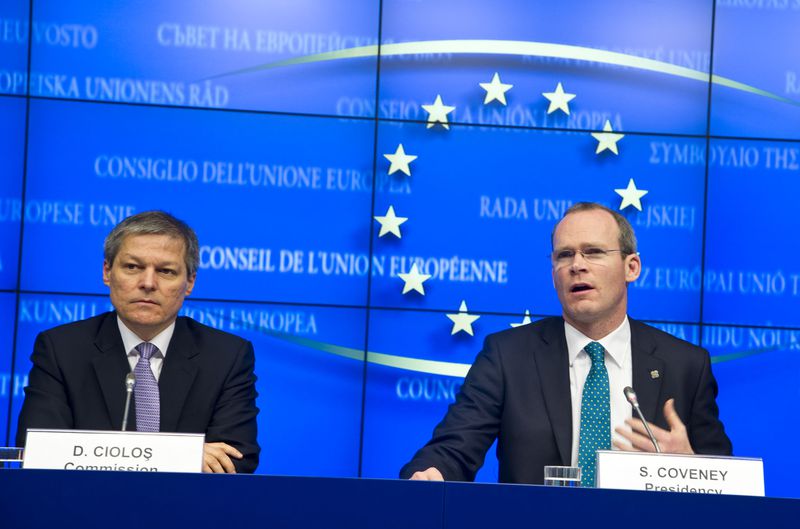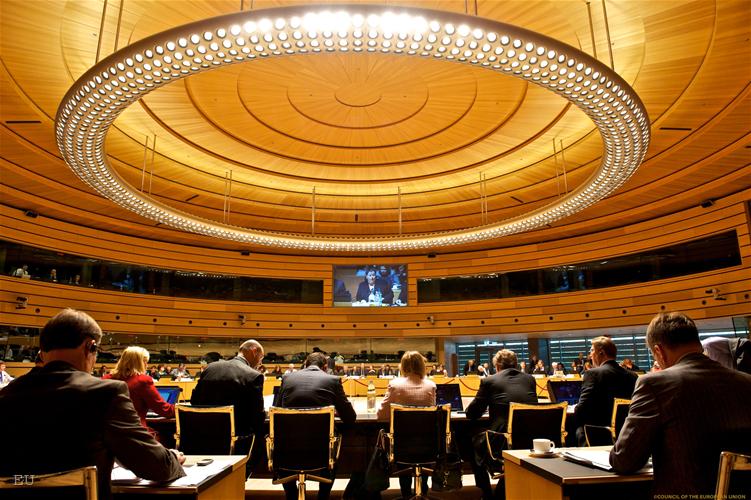Realpolitik in European Agriculture
Adelina Marini, October 13, 2011
 The agricultural policy is the first community policy, created yet with the Treaty of Rome that laid the foundations of the European Union. But the initial thinking behind this policy was to ensure food security against the backdrop of the hunger and destruction which World War II left all across Europe. Now the situation is much different, the initial reasons have been forgotten but, instead, the certainty that you can always rely on the strong back of the united European taxpayer has transformed into a necessity. A necessity which turns against each other the opponents of the farm subsidies and their proponents.
The agricultural policy is the first community policy, created yet with the Treaty of Rome that laid the foundations of the European Union. But the initial thinking behind this policy was to ensure food security against the backdrop of the hunger and destruction which World War II left all across Europe. Now the situation is much different, the initial reasons have been forgotten but, instead, the certainty that you can always rely on the strong back of the united European taxpayer has transformed into a necessity. A necessity which turns against each other the opponents of the farm subsidies and their proponents.
"I am forced to do realpolitik here", said on October 12 EU Agriculture Commissioner Dacian Ciolos before MEPs from the Agriculture Committee in the European Parliament, where he presented for the first time the legislative proposals to reform the Common Agricultural Policy (CAP). Realpolitik is a term that was introduced because of Otto von Bismarck's governance, as he was led in his convictions by the principles of realities and force. In other words - pure pragmatism. Dacian Ciolos has tried to approach the same way the need to build a bridge between the interests of the 27 member states with various geographic and climate realities. Against the background of the hundreds of pages of proposals, ideas and debates, in the past year two major problems have crystallised, which Ciolos claims he had found the balance of, but this is unlikely.
A change of the Direct Payments Scheme
Since the very beginning of the public debates on the future of the CAP as major  was outlined the issue of direct payments convergence between the new and the old member states, for which the new members lobbied intensively. Yet with the presenting of the European Commission proposal for the next Multiannual Financial Framework (MFF) for the period 2014-2020 it became clear that a complex formula will be applied for a gradual convergence, starting from 2014 and not as it is stipulated in the accession treaties of Bulgaria and Romania - from 2016.
was outlined the issue of direct payments convergence between the new and the old member states, for which the new members lobbied intensively. Yet with the presenting of the European Commission proposal for the next Multiannual Financial Framework (MFF) for the period 2014-2020 it became clear that a complex formula will be applied for a gradual convergence, starting from 2014 and not as it is stipulated in the accession treaties of Bulgaria and Romania - from 2016.
The formula, presented then, is kept in the same form in the legislative proposals of the Commission for the reform of CAP. According to it, the countries that receive less than 90% of the average direct payments per hectare will receive more. The difference will be filled by a third by 2020. Thus, for instance, if a member state currently receives around 75% per hectare from the EU average, which is 15% less than the 90 per cent, then it will gradually reach a level of 80 per cent.
To put it more simply, currently the average direct payment per hectare for 2013 is 94.7 euros in Latvia and 457.5 euros in the Netherlands, while the average for the EU is 269 euros. It is no accident that the Baltic countries were among the strongest proponents of subsidies convergence. Bulgaria is relatively close to the average levels. For a uniform convergence the Commission proposes a discussion to be held when the post-2020 budget is discussed.
Except convergence, the current single payments scheme will be replaced by a basic payment scheme. The purpose of the change is that thus the differences in the payment levels will be significantly reduced among farmers, regions and member states. All member states will have to endorse the convergence of payments per hectare on national or regional level by the beginning of 2019. The new scheme will provide payments on the basis of specific criteria, related to the environment, animal welfare and other rules.
An interesting element from Dacian Ciolos's proposal is that he had obviously listened to a large part of the proposals, made during the public debates in the last year and a half. One of them is stimulating young farmers. This issue was clearly outlined during a special conference in Brussels in the summer of 2010 when it became clear that the average age of European farmers is over 50 years, which dooms the agriculture to a serious crisis unless young people enter.
This is why the Commission proposes every young entrant (below 40 years of age) to be provided with start-up aid of 25% more than the basic payment, for the first five years of the installation. This possibility, though, is limited to a mid-sized farm. And where the farms in general are small, the limit will be 25 hectares. Young farmers are also tempted with the opportunity to receive start-up loans of up to 70,000 euros.
Lately the Commission focused strongly on small farmers, responding to numerously raised issues. For them a special new scheme is designed allowing each farmer, who decides to receive special assistance in 2014, to apply by the 15th of October 2014 to participate in the Small Farmers Scheme that would give them the possibility to receive annual assistance between 500 and 1,000 euros, no matter the size of the farm. A specific tool-kit is yet to be worked out but, according to the Commission, the sum will be bound either to the average payment per beneficiary, or to the average payment per hectare. The Commission thinks that this would be of great help for the farmers and the national administrations. The small producers will be able to apply for start-up loans too of up to 15,000 euros.
Unlike the small producers, the big farms will be capped. The payments for every separate holding under the new basic payment scheme will be limited to 300,000 euros, with 40% between 200,000-250,000 euros and by 20% between 150,000-200,000 euros. When capping, however, into account will be taken the number of workers per farm. This means that a holding will be able to deduct the sums for salaries for the previous year (including taxes and social contributions) prior to capping.
 Another thing that was discussed for a long time also found its place in the Commission's proposal - subsidies to be given to active farmers. But how to distinguish the active farmer? Subsidies will not be paid to farmers whose direct payments under the CAP are less than 5% of the total amount of all non-farming activities - there will be derogations for farmers who receive less than 5,000 euros for the previous year.
Another thing that was discussed for a long time also found its place in the Commission's proposal - subsidies to be given to active farmers. But how to distinguish the active farmer? Subsidies will not be paid to farmers whose direct payments under the CAP are less than 5% of the total amount of all non-farming activities - there will be derogations for farmers who receive less than 5,000 euros for the previous year.
Higher subsidies will be paid to farmers from mountain regions and zones above 62 degrees north. They will receive instead of 250 euros per hectare 300 euros.
The green measures
This is the second very controversial idea, presented the same way it was forwarded in July as part of the proposal for the next budget. Additionally to the basic payment each holding will receive money per hectare if certain farming practises are kept that are of benefit to climate and the environment. The member states can use 30% of their national budgets to pay for that. These measures remain compulsory in spite of the severe criticism, but they will not be capped.
The green measures to be stimulated are maintaining permanent pasture; and crop diversification, the purpose of which is protection of soils. Each farmer must cultivate at least 3 crops on his arable land none accounting for more than 70% of the land, and the third at least 5% of the arable area. Besides, farmers will be obliged to set aside 7% of their arable land (excluding permanent grassland) for ecological purposes. This means that these 7% will be used for field margins, hedges, trees, fallow land, landscape features, biotopes, buffer strips, afforested area, the purpose of which is to protect soils from erosion.
Although they did not have enough time to get properly acquainted with the  proposals, MEPs from the agriculture committee criticised the draft, especially in its most controversial parts - the direct payments and the green measures. One of the rapporteurs on the CAP reform, Albert Dess (EPP, Germany), said that the proposal for 30% green measures and a 7% set-aside would not make European agriculture more competitive. According to him, this would additionally burden both the farmers and the administrations.
proposals, MEPs from the agriculture committee criticised the draft, especially in its most controversial parts - the direct payments and the green measures. One of the rapporteurs on the CAP reform, Albert Dess (EPP, Germany), said that the proposal for 30% green measures and a 7% set-aside would not make European agriculture more competitive. According to him, this would additionally burden both the farmers and the administrations.
Luis Manuel CAPOULAS SANTOS (Socialists&Democrats, Portugal) disagreed with the size of the budget. He recalled to the Commissioner that the European Parliament insisted with a significant majority at least the budget to be maintained at its current size (almost 40% of the common budget). The Portuguese MEP expressed disagreement also with the formula for subsidies convergence, by explaining that thus there will still be farmers with half lower payments than others.
 Another rapporteur on the CAP in the committee, George Lyon (UK, ALDE), was also critical, saying that "on the key test of whether the proposals will incentivise and develop a more sustainable, more competitive, more carbon efficient agriculture the whole package falls dreadfully short". According to him, the greening of the direct payments would put the European farmers at a real risk of being noncompetitive. He said that the requirement 7% of the farm land to be set aside for ecological purposes was a pure nonsense in times of food and energy scarcity. However, the said a few good words about the ideas young farmers to be involved more actively in the CAP and the active farmers to be rewarded.
Another rapporteur on the CAP in the committee, George Lyon (UK, ALDE), was also critical, saying that "on the key test of whether the proposals will incentivise and develop a more sustainable, more competitive, more carbon efficient agriculture the whole package falls dreadfully short". According to him, the greening of the direct payments would put the European farmers at a real risk of being noncompetitive. He said that the requirement 7% of the farm land to be set aside for ecological purposes was a pure nonsense in times of food and energy scarcity. However, the said a few good words about the ideas young farmers to be involved more actively in the CAP and the active farmers to be rewarded.
The co-chairman of the agriculture committee, José Bové (Greens/EFA,  France), was even more straightforward, saying that the new legislative proposals to reform the CAP were entirely tailored to the demands of those countries that resist the reform and with the agroindustry lobbies. "The planned CAP reform has been gutted to suit demands of those defending the status quo. While earlier drafts were not revolutionary, at least they pointed in the right direction. Today's proposals have been stripped of all ambition and, as such, will fail to provide the basis to properly reform the CAP and ensure it is a tool to promote sustainable agriculture and fair incomes for farmers. What is left has been tailored to the demands of the agro-industry lobby at the behest of their cheerleaders in the Council, like German chancellor Angela Merkel and French President Sarkozy, and in the European Parliament, like chair of the EP agriculture committee Paolo di Castro".
France), was even more straightforward, saying that the new legislative proposals to reform the CAP were entirely tailored to the demands of those countries that resist the reform and with the agroindustry lobbies. "The planned CAP reform has been gutted to suit demands of those defending the status quo. While earlier drafts were not revolutionary, at least they pointed in the right direction. Today's proposals have been stripped of all ambition and, as such, will fail to provide the basis to properly reform the CAP and ensure it is a tool to promote sustainable agriculture and fair incomes for farmers. What is left has been tailored to the demands of the agro-industry lobby at the behest of their cheerleaders in the Council, like German chancellor Angela Merkel and French President Sarkozy, and in the European Parliament, like chair of the EP agriculture committee Paolo di Castro".
Although this is one of the most profoundly and for long debated reforms of a community policy, it is obvious that the controversies will continue even as part of the legislative procedure. The proposals will be discussed for the first time in the Council of Ministers of Agriculture next week, as the purpose is an agreement to be achieved between the Council and the Parliament by 2013 in order the measures to be enforced as of 2014.
 | © Polish Embassy in Sofia
| © Polish Embassy in Sofia | © Council of the EU
| © Council of the EU | © EU
| © EU